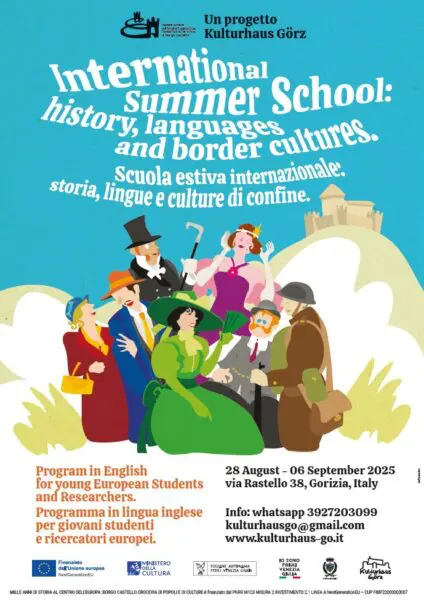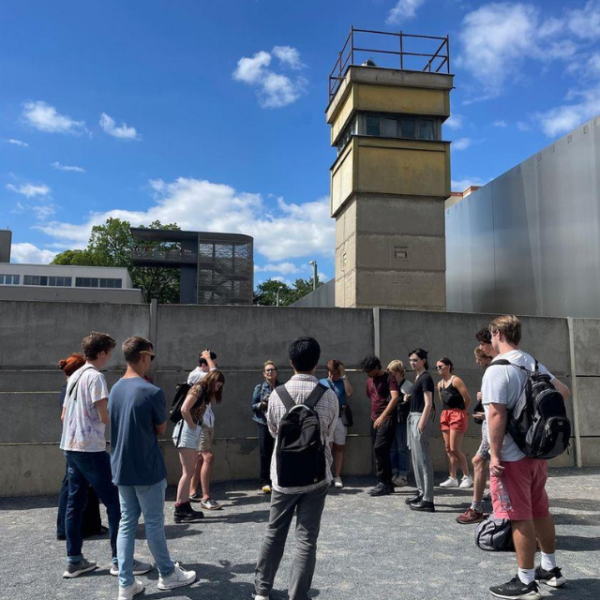
Gorizia, Italy
International Summer School for European Students and Researchers in Gorizia (Italy)
When:
28 August - 06 September 2025
Credits:
0 EC
Read more
History Summer Course
When:
07 June - 19 July 2025
School:
Summer and Winter University FUBiS
Institution:
Freie Universität Berlin
City:
Country:
Language:
English
Credits:
8 EC
Fee:
1850 EUR

In this course we examine the emergence of mainly youth-led resistance and protest movements in post-World War II Europe on both sides of the Iron Curtain, and attempt to understand their origins, their meaning and their effect on the societies in which they occurred.
American counterculture in the 1960s is often associated with rock’n’roll music, drug-taking, ’dropping out’ and the Anti-Vietnam protest movement. In Europe the associations are more complex and include countercultures in places like West Germany and Italy that are remembered for planting bombs and joining underground terror cells in the name of the New Left, or more extreme iterations of the New Left. On the other side of the Iron Curtain, in places like Hungary, East Germany, Czechoslovakia and the Soviet Union, anti-government protesters faced a very different, more dangerous existential struggle against authoritarian regimes that utilised torture and detention without trial to mute or prevent social uprisings.
In this course we account for the nature and intensity of post-war European protest movements by examining the historical context of the traumatic impact of recently defeated fascism on the continent, and the division of Europe into spheres of interest reflecting the Cold War world. We examine the post-war socio-economic developments that led to the massive expansion of higher education in Western Europe, promoting a generational divide which saw a radicalized younger generation turn on their parents and other members of the older (Nazi) generation or the so called ‘system’, sometimes in rage and violence, as in the examples of the Red Army Faction in Germany and the Red Brigades in Italy. We compare this to examples in Eastern Europe, where resistance movements against Communist regimes, such as in Hungary, Czechoslovakia and East Germany, were met with deadly force and violent oppression.
The course keeps as its particular focus East Germany (GDR) and West Germany (FRG), but we will also encounter the student-led uprisings against Sovietized Communism in Hungary in 1956 and during the 1968 ‘Prague Spring’, as well as the complex case of dissident movements in the USSR itself. Throughout the course, the city of Berlin will serve as a backdrop: as a place of often very radical anti-government movements in West Berlin, compared with the muted and hidden resistance to authority over the Berlin Wall in East Berlin. We will also examine how ‘resistance’ in Western Europe often meant solidarity with anti-colonial movements in the Middle East, Africa and South America. Last but not least, we will also discuss the gestation and rise, within these larger movements, of political parties such as the Green Party in Germany.
Some of the major questions in this course will be: how did the concept of ‘resistance’ and ‘rebellion’ differ between Western Europe and Eastern Bloc countries? How did dramatic changes after World War II in education, technology and popular culture inspire young people to question authority and choreograph that questioning into mass movements? What were the terms and concepts (the language, the writers and the thinkers) that they utilised to justify their struggle? How did these movements become violent? When were they productive and inspiring, when did they career into nihilism and destruction? What were, if any, the long-term effects on their societies and political institutions? And finally, in our current world of enormous economic inequality and environmental destruction, what can we learn from the radicals and resisters of the second half of the twentieth century in Europe, about the potential for productive protest and resistance today?
As source materials we will read historical accounts and analyses, contemporary sources such as communiques and newspaper articles, watch films, and go on outings in Berlin that will take us to the scenes of some of the most dramatic confrontations of this era. Being at Freie Universität is a good start – it was at this university that some of the most radical student activism of the 1960s occurred.
Dr. Lauren van Vuuren
This course is for university level students with open minds and incurable curiosity about the world around them. Interest in how the contamination of Nazism and the fissures created by the Cold War in Europe in the second half of the 20th century, in the context of accelerating anti-colonial struggles around the world, led to new kinds of (largely) youth led resistance to traditional authority, that even now influences the way we speak about identity, human rights and social responsibility, will be of benefit.
Fee
1850 EUR, course fee
Fee
300 EUR, program fee
When:
07 June - 19 July 2025
School:
Summer and Winter University FUBiS
Institution:
Freie Universität Berlin
Language:
English
Credits:
8 EC

Gorizia, Italy
When:
28 August - 06 September 2025
Credits:
0 EC
Read more

Tübingen, Germany
When:
01 August - 29 August 2025
Credits:
8 EC
Read more

Antwerp, Croatia
When:
21 July - 25 July 2025
Credits:
1 EC
Read more